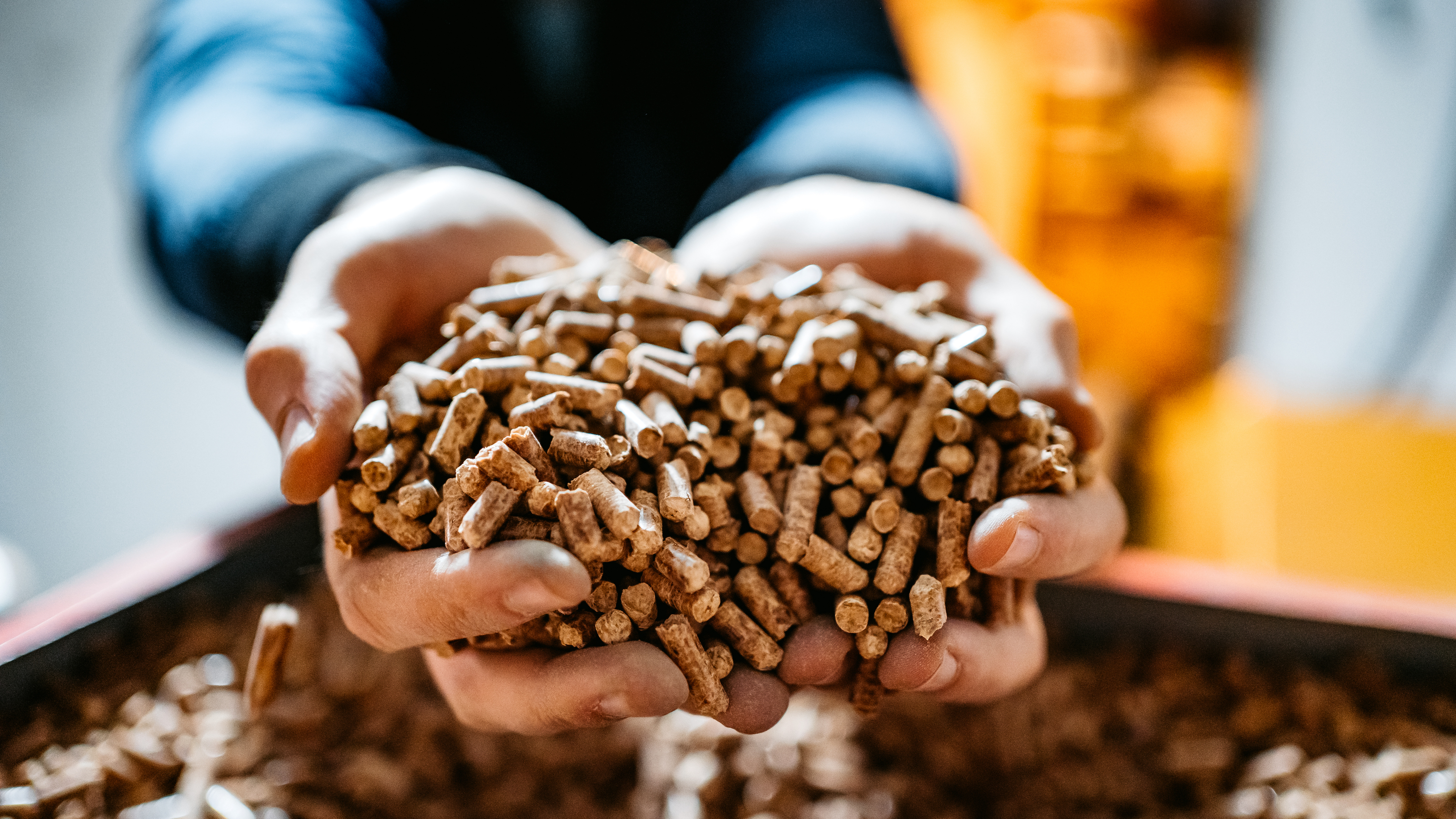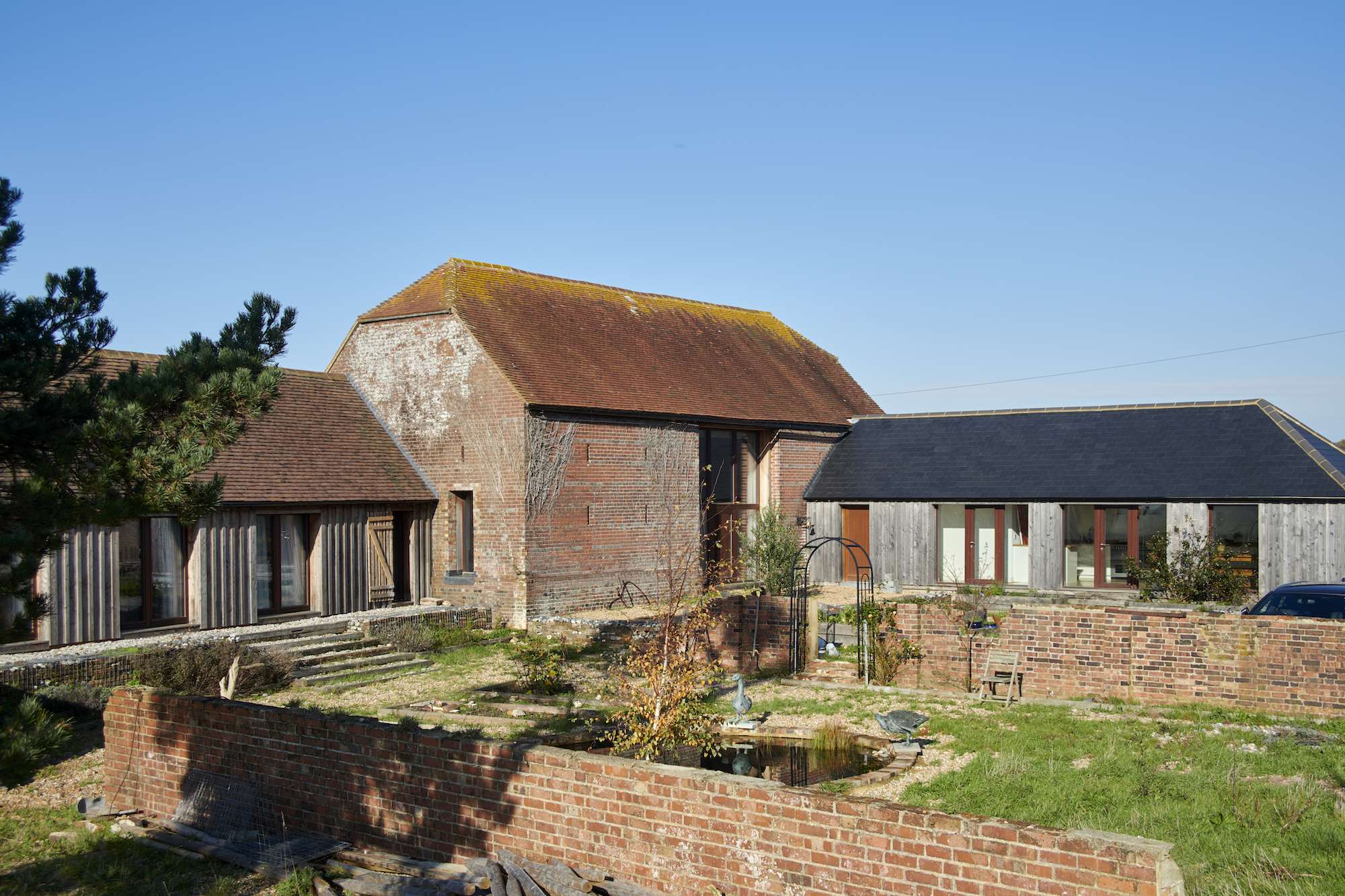What is biomass and is the fuel a good alternative to gas and oil?
Just what is biomass and can it present a greener alternative to burning fossil fuels? We answer commonly asked questions surrounding biomass fuel

Exactly what is biomass? Biomass boilers are now being seriously considered by some homeowners, particularly those off-grid, looking for an alternative to gas and oil boilers. But how is biomass fuel made and is it really a 'green' alternative?
Below, we answer some commonly asked questions about biomass and how it provides energy so anyone looking into installing a biomass boiler can make an informed decision about its pros and cons.
What is biomass energy?
Humans have always used biomass energy, right from before recorded history. The wood fires used by early humans for cooking and keeping warm were the first forms of biomass energy. Subsequently, following the industrial revolution and now in the present day, biomass is used for fuel to generate electricity and to power machinery.
What's more, biomass boilers can be used to heat an entire house as a viable alternative to gas and oil boilers.
In essence, biomass boilers generate energy by burning living or previously living organisms, particularly plants. Burning biomass can generate energy either indirectly or directly:
- The direct process involves burning biomass to generate heat or electricity, such as using a log burning stove.
- The indirect approach involves processing into biofuel, which can then itself be burned to generate heat or electricity — this is what is generally used in domestic biomass boilers.
However, before biomass can be burned, it must be dried so that it loses its ability to retain moisture. With regard to logs burned in a domestic log burner, this process is called seasoning. The wood supply for a burner must be left to dry at least one year (sometimes more depending on the wood) for maximum efficiency.
When applied to more processed forms of biomass, such as briquettes, it is called torrefaction. The biomass loses about 20% of its original mass but retains 90% of its energy. It then becomes a dry black material that can even be stored in moist areas if needs be.
Why is biomass important?
Biomass is important as biomass boilers can be used as an effective alternative to conventional gas boilers as they burn logs, wood pellets or wood chips instead of fossil fuels. This will become even more important as new gas boiler installations are phased out from existing properties from 2035.
The boilers can be connected to the central heating system to deliver a low-carbon gas boiler alternative. They are also very effective for households not actually connected to the main gas network, and for draughty, hard-to-heat homes.
Biomass fuel is also often cheaper than conventional gas, electric and coal, especially when in the form of biomass logs, which are usually cheaper than wood pellets. So, while biomass boiler costs are more than the typical gas or oil boilers, there are savings to be made long-term.
Biomass is also a far more sustainable fuel than fossil fuel, but only provided that new plants replace those that are harvested for fuel, given that the amount of carbon dioxide released during the burning of the biomass is the same as that absorbed during the time the plants were growing.
Furthermore, if waste wood biomass is used as a fuel, this avoids it being disposed of in a landfill site, which is incredibly wasteful and environmentally damaging.
Biomass has for a long time been used by farmers and other people living in rural areas, as well as those living in off-grid communities, often in remote areas for example where reliance on oil is higher.
What types of biomass fuel are available?
The most common biomass materials used for domestic energy are plants, such as waste wood materials from builders' yards, firewood and woody plants, as well as switchgrass, corn and soy, algae and residues from agriculture and food processing. These renewable materials are called ‘biomass feedstocks’.
Other materials included in municipal solid waste, such as paper, cotton, wool products and residues from food processing can also be used.
For domestic biomass boilers, the fuel can come delivered in pellets, logs and wood chips.
However, biomass fuels are subject to certain requirements by the Office of Gas and Electricity Markets (Ofgem), partly in order to be eligible for Renewables Obligation Certificates (ROCs). Development of land for biomass production has also previously been subject to requirements imposed by the European Commission in the form of the Renewable Energy Directive (RED).
As part of this, the UK Government has implemented sustainability criteria for solid and gaseous biomass. This is mostly applicable to power stations using biomass fuel, but it also applies to cultivation, processing and transportation of biomass.
Suppliers of biomass fuel must be listed on the Biomass Suppliers List (BSL) and new regulations on fuel quality requirements were introduced by BEIS on 1 April 2022. All fuels on the BSL must now meet this new fuel quality criteria. Any suppliers whose fuel does not meet this criteria will be delisted by Woodsure, the organisation that operates BSL.
Are biomass fuels more sustainable than oil and gas?
There are various opinions as to whether biomass fuels are 'better' than oil and gas. However, in general, the answer seems to be that they are, providing the biomass fuel is grown and harvested sustainably in the first place.
Furthermore, biomass fuel, being sourced from plants, trees and wood waste and so forth, can be replaced, while fossil fuels cannot be replaced, because they are a product of the degeneration of plants and animals over millions of years and so constitute a limited resource that experts estimate will be exhausted over the next 50 to 120 years.
Can you supply your own biomass fuel?
If you have the land or woodland to grow the necessary amount of biomass, then yes, you can supply your own fuel and could be regarded as a ‘self-supplier’.
Self-suppliers must register the fuel they use on the Biomass Suppliers List (BSL) and list themselves as a self-supplier as well as contacting BSL to ensure their fuel meets the new requirements.
Self-suppliers cannot sell their biomass fuel to anyone else and their land is registered on the BSL as a ‘Permitted Location’. This must be no more than 50 miles distant from the boiler in which the biomass fuel is used.
Additionally, if self-suppliers also buy in raw materials that they then process themselves, they will be registered on BSL as a ‘producer-trader’ rather than a self-supplier.

Is biomass clean energy?
There are different opinions on whether or not biomass is a form of clean energy.
According to the Office of National Statistics (ONS), the largest source of renewable energy currently consumed in the UK is biomass, although most of this (60%) is commercial and industrial biomass used for electricity generation.
This is considered, at the moment, as a form of clean energy because biomass crops remove carbon dioxide from the atmosphere while they grow, storing this either in their own plant or woody material or in the soil.
However, UK government research has shown that biomass burning is not entirely emission-free, unlike other forms of renewable energy generation. The amount of emissions produced by biomass burning can be either higher or lower than fossil fuels depending on the type of biomass material being burnt and how it is produced.
When the biomass fuel is managed and harvested in a sustainable manner, it can help to reduce carbon emissions, but critics of biomass have said that imported biomass, for example from Canada and the US, is not a sustainable form of biomass, because of the emissions associated with transportation or potential impacts on land.
Currently, a new £4.7 million project funded by the Department for Business, Energy and Industrial Strategy (BEIS), the Biomass Feedstocks Innovation Programme, is being developed and will contribute to the Government’s plans to achieve Net Zero by 2050. This is in line with scenarios presented by the Government’s advisory committee, the Climate Change Committee (CCC), which says that planting of biomass crops in the UK needs to increase 10,000 to 730,000 hectares by 2050 to meet future demand.
Each of the eight demonstration sites will grow up to 11 species of short-rotation trees and perennial grasses, including coppice willow, a tree that produces large amounts of biomass.
Wondering if biomass could be an option for your home? Find out how to work out your energy needs and choose the right renewables.
Get the Homebuilding & Renovating Newsletter
Bring your dream home to life with expert advice, how to guides and design inspiration. Sign up for our newsletter and get two free tickets to a Homebuilding & Renovating Show near you.

Robin is a freelance journalist based in the South West of England, UK. He specialises in environmental issues, climate change and renewable energy, with other interests in transport and green motoring. He is a regular daily correspondent for a renewable energy website, writing news articles and interview pieces on all the main clean energy technologies. He has also written widely for numerous magazines on these topics, as well as writing white papers and web content.
